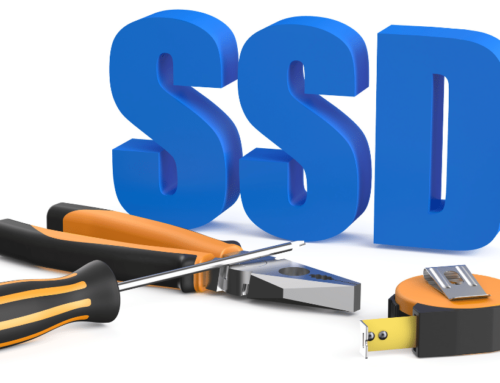As we enter the new year and reflect on the 25 live webinars that we held in 2019, we are thrilled with the level of interaction and thought we’d take a look back at some of the great questions asked during the lively Q&A sessions. Here are the top questions and the responses that our technical experts gave.
We run a Windows VM on a Microsoft Azure, is your product still applicable?
Yes. Whether the Windows system is a physical system or a virtual system, it still runs into the I/O tax and the I/O blender effect. Both which will degrade the system performance. Whether the system is on premise or in the cloud, V-locity® can optimize and improve performance.
If a server is dedicated to running multiple SQL jobs for different applications, would you recommend installing V-locity?
Yes, we would definitely recommend using V-locity. However, the software is not specific to SQL instances, as it looks to improve the I/O performance on any system. SQL just happens to be a sweet spot because of how I/O intensive it is.
Will V-locity/Diskeeper® help with the performance of my backup jobs?
We have a lot of customers that buy the software to increase their backup performance because their backup windows are going past the time they have allotted to do the backup. We’ve had some great success stories of customers that have reduced their backup windows by putting our software on their system.
Does the software work in physical environments?
Yes, although we are showing how the software provides benefits in a virtual environment, the same performance gains can be had on physical systems. That same I/O tax and blender effect that degrade performance on virtual systems can also happen on physical systems. The I/O tax occurs on any Windows systems when nice, sequential I/O is broken up into less efficient smaller, random I/O, which can also apply to physical workstation environments. The Blender Effect that we see when all of those small, random I/Os from multiple VMs have to get sorted by the Hypervisor and can occur on physical environments too. For example, when multiple physical systems are read/writing to different LUNs on the same SAN.
What about the safety of this caching? If the system crashes, how safe is my data?
The software uses read-only caching, as data integrity is our #1 priority when we develop these products. With read-only caching, the data that’s in our cache is already in your storage. So, if the system unexpectedly goes down (i.e. Power outage), it’s okay because that data in cache is already on your storage and completely safe.
How does your read cache differ from SQL that has its own data cache?
SQL is not too smart or efficient with how it uses your valuable available memory. It tries to load up all of its databases as much as it can to the available memory that is there, even though some of the databases or parts of those database aren’t even being accessed. Most of the time, your databases are much larger than the amount of memory you have so it can never fit everything. Our software is smarter in that it can determine the best blocks of data to optimize in order to get the best performance gains. Additionally, the software will also be caching other noisy I/Os from the system that can improve performance on the SQL server.
In a Virtual environment, does the software get installed on the Host or the VMs?
The software gets installed on the actual VMs that are running Windows, because that’s where the I/Os are getting created by the applications and the best place to start optimizing. Now, that doesn’t necessarily mean that it has to get installed on all of the VMs on a host. You can put it just on the VMs that are getting hit the most with I/O activity, but we’ve seen the best performance gains if it gets installed on all of the VMs on that host because if you only optimize one VM, you still have the other VMs causing performance degradation issues on that same network. By putting the software on all of them, you’ll get optimal performance all around.
Is your product needed if I have SSDs as my storage back-end?
Our patented I/O reduction solutions are very relevant in an SSD environment. By reducing random write I/Os to back end SSD’s, we also help mitigate and reduce write amplification issues. We keep SSDs running at “like new” performance levels. And, although SSDs are much faster than HDDs, the DRAM used in the product’s intelligent caching feature is 10x-15x faster than SSDs. We have many published customer use cases showing the benefits of our products on SSD based systems. Many of our customers have experienced 50, 100, even 300% performance gains in an all flash/SSD environment!
Do we need to increase our RAM capacity to utilize your software?
That is one of the unique Set-It-and-Forget-It features of this product. The software will just use the available memory that’s not being used at the time and will give it back if the system or user applications need it. If there’s no available memory on the system, you just won’t be able to take advantage of the caching. So, if there’s not enough available RAM, we do recommend adding some to take advantage of the caching, but of course you’re always going to get the advantage of all the other technology if you can’t add RAM. Best practice is to reserve 4-8GB at a minimum.
What teams can benefit most from the software? The SQL Server Team/Network Team/Applications Development Team?
The software can really benefit everyone. SQL Servers are usually very I/O intensive, so performance can be improved because we’re reducing I/O in the environment, but any system/applications (like File Server or Exchange Server) that are I/O intensive will benefit. The whole throughput and network team can benefit from it because it decreases the meta traffic that has to go through the network to storage, so it increases bandwidth for others. Because the software also improves and reduces I/O across all Microsoft applications, it really can benefit everyone in the environment.
There you have it – our top 10 questions asked during our informative webinars! Have more questions? Check out our FAQs, ask us in the comments below or send an email to [email protected].





Leave A Comment
You must be logged in to post a comment.